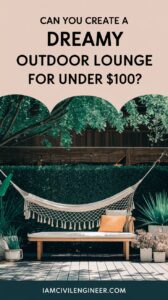The Gotthard Base Tunnel, an astounding feat of modern engineering, holds the title of the longest and deepest traffic tunnel in the world. Spanning an impressive 57 kilometers (approximately 35 miles), the tunnel connects Switzerland and Italy, running beneath the mighty Swiss Alps. It took 17 years to complete and was officially opened in 2016. This tunnel isn’t just a wonder because of its sheer length, but also because of the profound impact it has on European travel and transport.

The Vision Behind the Gotthard Base Tunnel
The Gotthard Base Tunnel was conceptualized as a solution to one of Europe’s most persistent transportation problems: the bottleneck created by the Alps. For centuries, the towering mountain range posed significant challenges for travelers and goods moving between northern and southern Europe. Roads and existing railways, though functional, were often slow and susceptible to weather disruptions, particularly in winter.
The need for a more efficient and reliable transport route gave rise to the idea of creating a tunnel that could bypass the natural obstacles posed by the Alps. In addition to speeding up travel, such a tunnel would also offer environmental benefits by reducing traffic congestion and lowering the carbon footprint of transportation across Europe.
The project gained traction in the 1990s, with the Swiss people voting in favor of its construction through national referenda, reflecting the tunnel’s importance to the country and the continent. As one of the most ambitious infrastructure projects ever undertaken, the Gotthard Base Tunnel became a symbol of modern engineering prowess, international collaboration, and sustainable development.
The Construction Process: An Engineering Challenge
Building the Gotthard Base Tunnel was no easy task. The project involved over 2,600 workers and took 17 years to complete, starting in 1999 and concluding in 2016. Excavating through the Alps presented a monumental challenge, requiring advanced technologies and precise planning. Engineers had to navigate tough geological conditions, including rock formations with varying degrees of stability.
Two main tunnels were drilled in parallel, each capable of accommodating trains traveling in opposite directions. The excavation process was carried out using Tunnel Boring Machines (TBMs), also known as “moles,” which are large, specialized machines capable of cutting through solid rock. These machines were essential in advancing the tunnel construction at a steady pace, with some areas requiring traditional blasting methods where TBMs couldn’t be used due to difficult geological conditions.
At its deepest point, the tunnel reaches 2,300 meters (7,500 feet) beneath the peaks of the Alps, making it not only the longest but also the deepest traffic tunnel in the world. The sheer depth presented significant engineering challenges, including ventilation and maintaining safe conditions for workers. Safety was a top priority throughout the project, with multiple emergency access points and safety measures incorporated into the design.
Technological Innovation and Safety
One of the most impressive aspects of the Gotthard Base Tunnel is the sophisticated technology integrated into its operation. The tunnel features a fully automated control system, which monitors and regulates train movements, ventilation, and emergency protocols. In case of an emergency, there are multiple cross passages connecting the two main tunnels, allowing passengers and workers to evacuate to safety. The tunnel’s designers also implemented a state-of-the-art fire suppression system to ensure that any incidents could be swiftly managed.
Moreover, the tunnel is equipped with advanced safety systems that monitor temperature, air quality, and train speeds. These systems ensure optimal conditions for passengers and freight while guaranteeing that trains can travel through the tunnel at high speeds safely.
Like Us on Facebook!
The tunnel can handle high-speed trains that can reach up to 250 kilometers per hour (155 miles per hour), dramatically reducing travel times between northern and southern Europe. For example, the journey from Zurich, Switzerland, to Milan, Italy, now takes around two hours and 40 minutes, a significant improvement compared to the previous routes.
Subscribe Us on YouTube!
Economic and Environmental Impact
The Gotthard Base Tunnel is not just an engineering marvel; it also has profound economic and environmental implications. By creating a more direct and efficient route between northern and southern Europe, the tunnel has become a key artery for both passenger and freight transport. This increased efficiency has led to a reduction in transportation costs, making it easier and cheaper for goods to move across Europe.
Moreover, the tunnel has played a vital role in promoting sustainable transport. By offering a faster and more efficient alternative to road transport, the Gotthard Base Tunnel has helped reduce truck traffic on Alpine roads. This shift from road to rail has had a positive impact on the environment, significantly lowering greenhouse gas emissions and helping to protect the fragile ecosystems of the Alps.
The tunnel also contributes to the European Union’s broader goals of enhancing connectivity and fostering economic integration. By reducing travel times and facilitating trade, the Gotthard Base Tunnel strengthens the economic ties between northern and southern Europe, promoting growth and development across the continent.
The Human Factor: A Testament to International Collaboration
While the technical aspects of the Gotthard Base Tunnel are undoubtedly impressive, the human element behind its construction cannot be overlooked. The tunnel is a testament to international collaboration, with workers, engineers, and experts from various countries coming together to complete this massive project. The workforce included not only Swiss professionals but also workers from Italy, Germany, Austria, and other European countries.
Despite the challenges faced during construction, including accidents and natural hazards, the project was completed on time and within budget, a remarkable achievement for an infrastructure project of this scale. The successful completion of the Gotthard Base Tunnel stands as a tribute to the perseverance, skill, and dedication of all those involved in its construction.
Cultural Significance and Future Potential
The Gotthard Base Tunnel also holds cultural significance for Switzerland and Europe as a whole. Switzerland, known for its neutrality and mountainous terrain, has historically been seen as a bridge between northern and southern Europe. The tunnel reinforces this role, physically and symbolically connecting regions and peoples.
Looking ahead, the Gotthard Base Tunnel has the potential to serve as a model for future infrastructure projects. Its focus on sustainability, safety, and efficiency aligns with the global push toward greener, more connected transport networks. As the world continues to face the challenges of climate change and increasing urbanization, projects like the Gotthard Base Tunnel demonstrate the power of engineering to create solutions that benefit both people and the planet.
Conclusion: A Lasting Legacy
The Gotthard Base Tunnel is far more than just a tunnel; it is a symbol of human ingenuity, perseverance, and the ability to overcome natural obstacles through technology and collaboration. Its construction required the coordination of thousands of workers, cutting-edge technology, and a vision for a more connected and sustainable future. Today, the tunnel plays a vital role in Europe’s transportation network, significantly reducing travel times and facilitating trade across the continent.
As the world continues to grapple with the challenges of transportation, climate change, and economic integration, the Gotthard Base Tunnel stands as a reminder of what can be achieved when people come together with a shared purpose. It is, without a doubt, one of the most remarkable engineering accomplishments of the 21st century and will continue to inspire future generations of engineers, scientists, and dreamers.



















